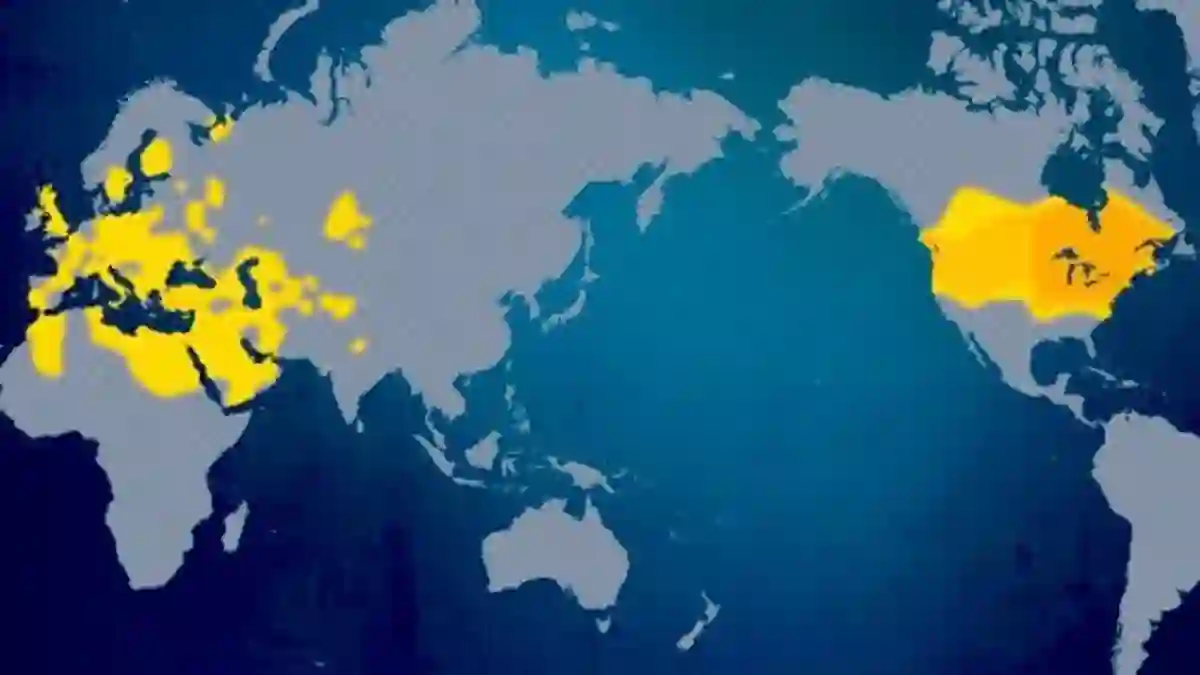For decades, scientists have puzzled over a rare DNA marker that appears both in Europe and North America, with no clear trail through Siberia or Alaska.
This genetic enigma, known as Haplogroup X, challenges long-held ideas about how the Americas were first populated.
Haplogroup X is a maternal lineage, passed from mother to child, that’s extremely rare but surprisingly present in some Indigenous North American groups.
Its unusual distribution suggests that early Americans may have arrived in multiple waves, rather than exclusively via the Bering Land Bridge from Siberia.
Haplogroup X in North America and Beyond
Today, the X2a branch of Haplogroup X is found among Indigenous groups such as the Ojibwe, Sioux, Nuu-chah-nulth, Navajo, and Yakama.
Meanwhile, other branches of Haplogroup X are seen in Europe and Western Asia.
This pattern hints at a far more intricate migration story than researchers originally believed.
Dr. Krista Kostroman, a genetic medicine expert and Chief Science Officer at The DNA Company, explained: “Haplogroups are like family seals.
They are distinctive genetic marks passed down over thousands of years, connecting us to ancestors who lived in completely different landscapes and cultures.
Because they rarely change, they serve as identifiers for tracing ancient migrations.”
The Usual Maternal Lineages of Native Americans
Most Native American maternal lineages fall into four main haplogroups: A, B, C, and D.
Each traces back to different parts of East Asia and reflects separate waves of migration during the late Ice Age.
-
Haplogroup A: Widespread across North, Central, and South America.
-
Haplogroup B: Common in the Pacific Northwest and parts of Central and South America.
-
Haplogroup C: Concentrated among northern and western Indigenous groups.
-
Haplogroup D: Found across North and South America, especially in Arctic and sub-Arctic regions.
These lineages provide a clear Asian origin for most maternal lines, which makes Haplogroup X’s presence in North America all the more striking.
Tracing Haplogroup X Across Time
The X2a variant appears mainly in the Northeast and Great Lakes regions, while X1 is rare and primarily found in North Africa, the Near East, and parts of the Mediterranean.
Its scarcity makes it a powerful clue for ancient human migration.
“When an uncommon marker appears in distant, disconnected regions, it signals a shared connection deep in the past,” said Kostroman.
Theories About How X2a Reached North America
Haplogroup X does not prove European ancestry for Native Americans, nor a direct Atlantic migration.
Its rarity in Siberia and Alaska suggests it may represent an earlier migration, potentially along coastal routes.
The most widely accepted theory is that X2a arrived during the late Ice Age as part of a migration across the Bering Land Bridge, alongside other maternal lineages.
Other possibilities remain speculative, such as multiple migration waves or small exploratory groups bringing X2a to the Americas.
Controversy and the Solutrean Hypothesis
When Haplogroup X was first identified in the 1990s, it sparked debate.
Some researchers proposed a direct Atlantic crossing, called the Solutrean hypothesis.
However, this idea has largely been dismissed, as the X2a lineage differs significantly from European branches.
Other rare haplogroups, like C1b and B2a, show secondary migration waves and diversification within the Americas.
Haplogroup U5 in Europe demonstrates how isolated populations can preserve rare lineages—much like X2a in North America.
Separating Science from Speculation
Some have tried to link Haplogroup X to religious or pseudoscientific claims, such as connections to Hebrew ancestry or pre-Columbian trans-Atlantic crossings.
Kostroman cautions against overinterpretation:
“Over the past two decades, Haplogroup X has moved from being a centerpiece of bold trans-Atlantic theories to a subtle yet powerful clue in understanding human prehistory.
It shows that human migration was complex, involving multiple waves, exploratory groups, and connections across Eurasia long before people reached the New World.”



